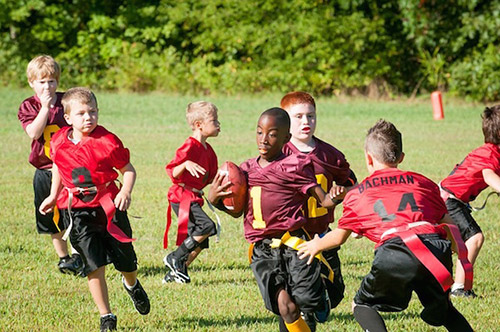
Dental emergencies can happen at any time and usually, occur outside of the dentist’s office. Regular dental visits and good oral hygiene can prevent most minor problems such as toothaches. But accidents are unpredictable. What do you do when a dental emergency catches you unprepared and your dentist is not nearby?
The following guidelines for common situations, especially now that fall sports season is underway, will help you act quickly in the event of a dental emergency. Performing these steps can be the difference between saving and losing a tooth.
Use Proper Precaution
Exercise common precaution to protect your smile. Avoid chewing ice, hard candy, popcorn kernels and other hard substances because they can break your teeth. Never use your teeth as tools, such as to open packages.
Always wear a sports guard during sporting activities to minimize oral injuries. A well fitting sports guard will prevent direct impact to the teeth and cushion a blow to the head that might otherwise cause a concussion. Also, make sure your dentist’s emergency number is saved in your phone.
Bitten Tongue or Lip
Clean the area gently with a cloth and warm water. Hold pressure over the bleeding area with clean gauze or a tea bag for 10-30 minutes. Apply a cold compress to minimize any swelling. If the bleeding does not stop shortly, go to the nearest emergency room.
Broken Tooth
Rinse your mouth with warm water and apply a cold compress to the cheek to prevent swelling. Call your dentist immediately. The tooth can quickly break down further, even in the absence of pain. If you find the broken fragment of the tooth, bring it with you to the dentist. Your dentist may be able to reposition the broken piece to create a more natural restoration.
Suspected Broken Jaw
A jawbone fracture is the 10th most common bone fracture in the body. Symptoms of a broken jaw may include jaw pain, difficulty opening your mouth all the way, teeth that don’t fit together well, numbness of the lips or chin, swelling and bruising or bleeding under the tongue. If you suspect a broken jaw, put a cold compress on the jaw immediately and head to the nearest emergency room.
Knocked Out Tooth
When a tooth is knocked out, there is an immediate time constraint before the condition can worsen. Often, a tooth can be saved if is repositioned by a dentist in under one hour.
Hold the tooth by the crown and rinse under water if it’s dirty. Do not scrub the tooth or remove any attached tissue. If possible, gently reposition the tooth in the socket and hold it there. If that’s not possible, put the tooth in a container filled with milk or saline solution. Go to your dentist’s office immediately.
For the time being, put a cold compress on the site of injury to minimize swelling. Only adult teeth should be repositioned. Do not attempt to reposition a baby tooth because you can accidentally injure the adult tooth forming underneath. Any teeth that were partially knocked out or shifted also require immediate attention. They may need to be stabilized by a splint.
Object Stuck Between the Teeth
Rinse your mouth with warm water vigorously as it can dislodge the object. Do not use sharp instruments to remove the object. Tie a knot on a string of floss and pull the floss through your teeth to gently remove the offending object. Call your dentist for an appointment if the object does not budge. If the object remains caught under the gum, it can cause a gum infection.
Broken Braces Wire or Loose Orthodontic Brackets
Try using the end of a pencil eraser to gently reposition the wire into a more comfortable spot where it does not scratch your cheeks or gums. If you are unable to adjust it, place a cotton ball or orthodontic wax over the sharp tip of the wire to prevent scratching. Use orthodontic wax to keep a loose bracket in place until you can get to your orthodontist’s office. Never cut the orthodontic wire yourself because you can accidentally inhale or swallow the cut fragment of the wire.
Always call your dentist if you are unsure that an emergency trip is necessary. It’s better to be safe than to risk further injury or a missing tooth. Prepare for the unexpected by taking note of these standards of care to confidently handle dental injuries. You can even print out this blog post to keep in your purse. Share it with the other parents on your child’s sports teams and at school.
